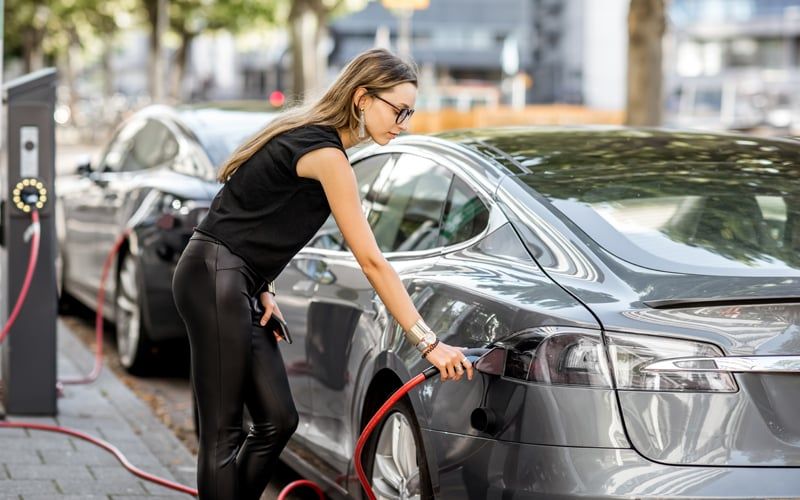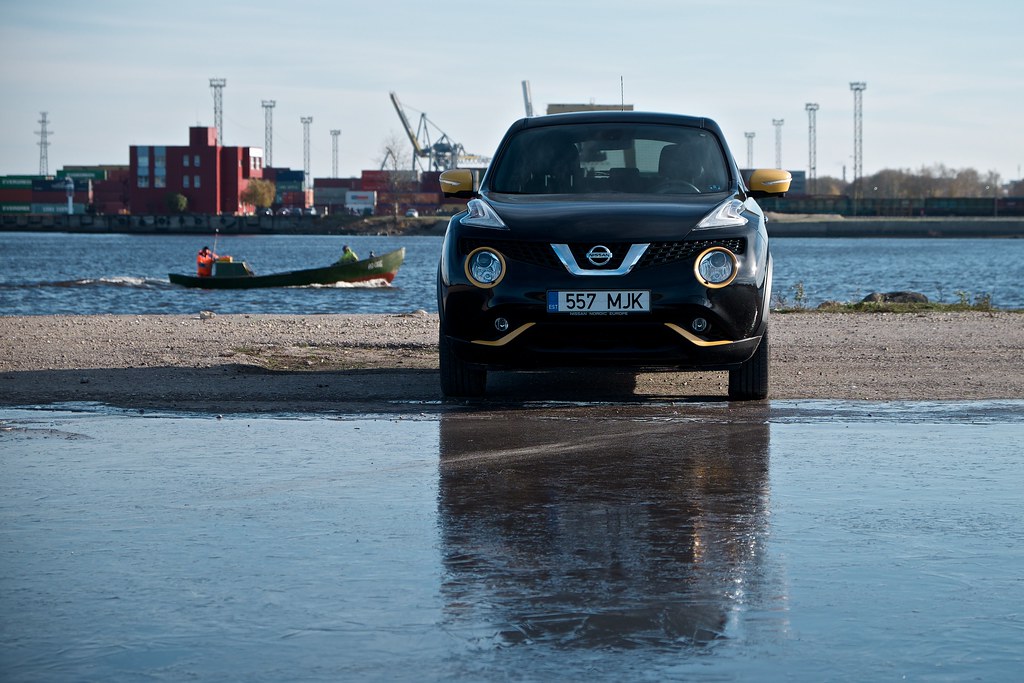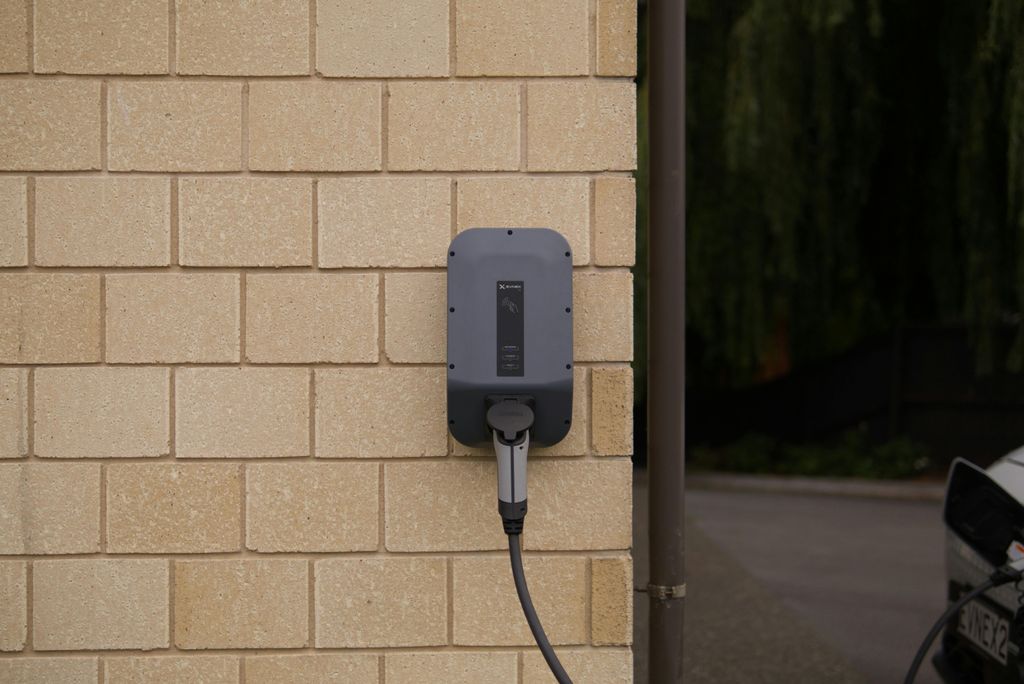
So, you’re EV-curious, huh? The allure of electric mobility is undeniable, offering quiet drives, zero tailpipe emissions, and a genuine connection to the future of transportation. Yet, the price tag of a brand-new EV can often give even the most enthusiastic buyer pause. This is precisely where the burgeoning used EV market of 2025 becomes not just an option, but a genuinely smart pathway to electrifying your daily commute and weekend adventures.
New electric vehicles, much like their gasoline-powered counterparts, experience depreciation, but notably at a faster rate. This means that a barely-driven three-year-old EV, perhaps a former lease vehicle with fewer than 15,000 miles, can be snagged at a significant discount. These vehicles often haven’t been subjected to rigorous long-distance travel, mitigating concerns about excessive battery wear. Coupled with the inherent perks of EV ownership—like lower charging costs and minimal maintenance, waving goodbye to routine oil changes—a pre-owned electric vehicle truly starts to shine as an appealing proposition.
This comprehensive guide, tailored for the astute 2025 buyer, is your essential roadmap to navigating the secondhand EV world. We’ll cut through the noise, revealing everything from crucial battery health assessments and the strategic advantages of depreciation to unlocking government incentives and understanding the nuances of ownership costs. Prepare to arm yourself with the expert knowledge needed to make a confident, informed decision, ensuring your entry into the electric future is both exciting and fiscally sound.

1. **Assessing Battery Health: The Heart of Your Used EV**Real talk: the battery is the single most critical component in any electric vehicle, and its health is paramount when considering a used model. Replacing an EV battery is a substantial expense, potentially ranging from $5,000 to $16,000, making a thorough assessment non-negotiable. Fortunately, checking its health is more accessible than you might think with the right approach and tools, allowing you to gauge its remaining life and performance capabilities.
One of the initial steps involves a simple yet effective dashboard check. Fully charge the prospective EV and observe the estimated range displayed. If this reported range falls within 10–20% of the vehicle’s original EPA-rated range, it’s generally a good indication that the battery is in robust health. This quick visual provides an immediate proxy for the battery’s current capacity, giving you a baseline understanding of its degradation.
Beyond the dashboard, leveraging online resources can provide deeper insights. Websites like Recurrent Auto offer valuable model average data, allowing you to compare the specific vehicle you’re interested in against how similar cars typically age. This real-world battery health data from comparable vehicles helps set realistic expectations for estimated range versus the car’s original specifications, as “Cars degrade differently from brand to brand,” notes Sean Tucker, lead editor for Kelley Blue Book.
For the most comprehensive evaluation, a professional diagnostic scan is highly recommended. This process, akin to an X-ray for the battery, can identify weak cells or significant capacity loss that might not be immediately apparent through a simple range check. While it might incur a small cost, typically around $100-$300, this investment in peace of mind and negotiation leverage can prove invaluable in avoiding costly surprises down the road, especially for high-mileage vehicles.
It’s also crucial to remember that most EVs come with an 8-year or 100,000-mile battery warranty. Even if unforeseen issues arise post-purchase, you might still be covered, but verifying the transferability and remaining term of this warranty is a vital step in your assessment, as batteries are often warranted separately from the rest of the car, with potentially tricky rules.
Read more about: Navigating the Electric Future: 12 Essential Questions for Savvy Used EV Buyers

2. **Understanding and Leveraging Depreciation: Your Financial Advantage**Depreciation is often viewed as a negative aspect of car ownership, but for the savvy used EV buyer, it’s a powerful financial lever. This rapid decline in value, particularly prevalent in the EV market, is precisely why you might find a high-tech vehicle like a Tesla Model 3 at a significantly reduced price compared to its original MSRP. It’s the primary reason a used EV becomes an accessible and attractive option.
Several factors contribute to the accelerated depreciation of electric vehicles. Government incentives, initially designed to reduce the upfront cost for first buyers, inadvertently affect resale values by lowering the initial effective price. Furthermore, the rapid evolution of EV technology means that newer models frequently arrive with enhanced range, faster charging, and advanced features, making older models less attractive at their original price point and pushing down their secondhand value.
Additionally, initial perks that accompany new EV purchases, such as free chargers or charging credits, often vanish when the vehicle is resold. These benefits contribute to the initial premium and, once gone, create another layer of depreciation. The combined effect of these factors means that a vehicle that was once out of reach for many buyers becomes a viable and appealing option in the used market.
The beauty of this depreciation cycle is that it translates directly into substantial savings for you. You gain access to cutting-edge, eco-friendly transportation, complete with modern features and impressive performance, all without shouldering the hefty new-car markup. This strategic advantage allows budget-conscious buyers to step into the electric future with a vehicle that delivers exceptional value, often still packed with advanced technology and substantial life remaining.
Car Model Information: 2023 Volvo XC60 B5 Ultimate Bright Theme
Name: Tesla Model 3
Manufacturer: Tesla, Inc.
Production: 2017–present
Assembly: unbulleted list
Designer: Franz von Holzhausen
Class: Mid-size car
BodyStyle: Sedan (car)
Layout: unbulleted list
Related: Tesla Model Y
Motor: unbulleted list
Transmission: Single-speed fixed (9:1 ratio)
Battery: unbulleted list
ElectricRange: unbulleted list
Charging: unbulleted list
Wheelbase: cvt
Length: unbulleted list
Width: cvt
Height: unbulleted list
Weight: cvt
Caption: 2019 Tesla Model 3 Performance
Categories: 2020s cars, ANCAP large family cars, All-wheel-drive vehicles, All Wikipedia articles in need of updating, All Wikipedia articles written in American English
Summary: The Tesla Model 3 is a battery electric powered mid-size sedan with a fastback body style built by Tesla, Inc., introduced in 2017. The vehicle is marketed as being more affordable to more people than previous models made by Tesla. The Model 3 was the world’s top-selling plug-in electric car for three years, from 2018 to 2020, before the Tesla Model Y, a crossover SUV based on the Model 3 chassis, took the top spot. In June 2021, the Model 3 became the first electric car to pass global sales of 1 million.
A facelifted Model 3 with revamped interior and exterior styling was introduced in late 2023 for countries supplied by Gigafactory Shanghai and in early 2024 in North America and other countries supplied by the Tesla Fremont Factory.
Get more information about: Tesla Model 3
Buying a high-performing used car >>>
Brand: Tesla Model: Model 3
Price: $33,595 Mileage: 57,695 mi.
Read more about: Unlock Thousands: 12 Expert-Backed Strategies to Understand and Master Your Car’s Depreciation

3. **Navigating Purchase Options: Certified Pre-Owned (CPO) vs. Private Sale**When entering the used EV market, you’ll encounter two primary avenues for purchase: Certified Pre-Owned programs or private sales and independent dealer lots. Each option presents a distinct set of advantages and disadvantages, influencing everything from the price you pay to the level of peace of mind you acquire. Understanding these differences is key to choosing the path that best aligns with your priorities and risk tolerance.
Certified Pre-Owned (CPO) vehicles, typically offered by manufacturer dealerships, come with an elevated level of assurance. These EVs are meticulously inspected to meet stringent manufacturer standards, often undergo necessary reconditioning, and are frequently backed by extended warranties that go beyond the original factory coverage. While a CPO EV will generally command a higher purchase price compared to a private sale, the comprehensive inspections, manufacturer backing, and additional warranty support offer a significant degree of peace of mind, mitigating many of the common concerns associated with used car purchases.
Conversely, a private sale or purchase from a non-CPO dealer lot can often present a more budget-friendly option. Prices in these channels can be considerably lower, and a private sale offers the unique opportunity to interact directly with the previous owner. This direct communication can be invaluable, allowing you to inquire about the vehicle’s history, charging habits, and any quirks it might have developed. “You’d be amazed what you’ll learn from the stories they tell,” the context highlights, emphasizing the personal insight you can gain.
However, private sales and non-CPO dealer purchases typically come with less warranty support unless the original factory warranty is still in effect and transferable. This places a greater onus on the buyer to perform their due diligence. Regardless of the purchase channel, it’s a non-negotiable best practice to always run a comprehensive vehicle history report, such as Carfax, to uncover accident history, service records, and title issues, ensuring full transparency before you commit.

4. **Unlocking Government Incentives: Boost Your Savings**A significant, often overlooked, benefit of buying a used EV in 2025 is the availability of various government incentives. These aren’t just for brand-new vehicles anymore; the IRS now offers a Used Clean Vehicle Credit, providing a valuable financial boost to eligible buyers. This credit, along with potential state-specific perks, can dramatically reduce the net cost of your electric vehicle, making the transition even more attractive.
To qualify for the federal Used Clean Vehicle Credit, several important criteria apply. There are income restrictions, with modified adjusted gross income thresholds set at $75,000 for individual filers, $112,500 for heads of household, and $150,000 for joint filers. Additionally, the vehicle itself must meet specific price thresholds, typically under $25,000, and must be at least two model years old, sourced from a dealer, not a private party. Staying current with these rules by checking IRS.gov or your state’s website is crucial, as eligibility can change.
Beyond the direct financial incentive of tax credits, owning an EV can unlock a host of other valuable perks. Many regions offer access to High-Occupancy Vehicle (HOV) lanes, even with a single occupant, significantly shortening commute times. Priority parking spots are often designated for EVs, and some utility companies provide discounted rates for home charging, particularly during off-peak hours. These cumulative benefits contribute to a lower overall cost of ownership and enhance the daily convenience of EV life.
It’s worth noting that the used EV tax credit for qualified buyers was set to expire at the end of September in the provided context, which underscores the importance of timely action and verifying current eligibility. Strategic buyers can leverage these incentives, alongside depreciation, to acquire a high-quality EV at an unprecedented value, making this a particularly opportune moment to enter the electric vehicle market.
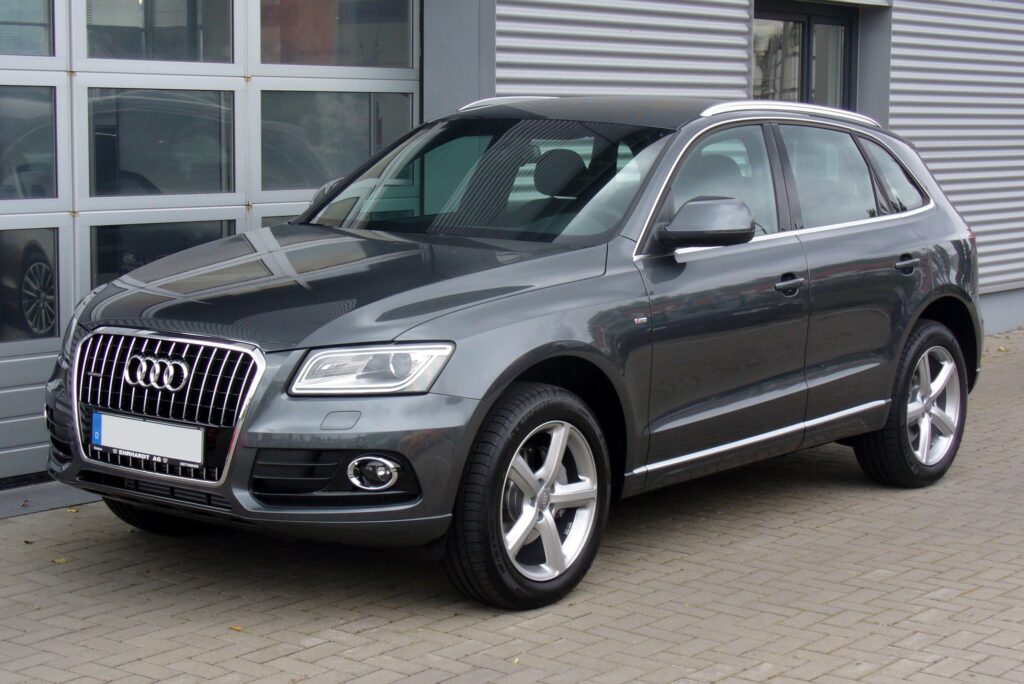
5. **Financing Your Used EV: Navigating Loan Options**Financing a used electric vehicle operates on much the same principles as securing a loan for any other pre-owned car. Most banks, credit unions, and even specialized EV lenders are eager to fund your electric dreams, recognizing the growing market and reliability of these vehicles. However, there are a few distinct nuances to be aware of that can influence your loan terms and overall financial strategy.
A key difference to keep in mind is that used EVs might not qualify for the same promotional interest rates that are often extended to brand-new models. Manufacturers frequently subsidize financing for new vehicles to incentivize sales, a benefit that typically doesn’t transfer to the secondhand market. Therefore, it’s essential to manage expectations regarding interest rates and be prepared to shop around for the most competitive offers available.
Furthermore, some lenders might exercise greater discretion when it comes to financing older EVs or those with significantly higher mileage. While EV drivetrains are known for their durability, the perceived risk associated with battery degradation in older models can influence a lender’s willingness to offer favorable terms. High mileage, while less impactful on EV powertrains than ICE vehicles, can still be a factor in some financial institutions’ risk assessments.
The overarching advice when financing a used EV is to shop around diligently for the best loan terms. Don’t settle for the first offer you receive; instead, compare rates, fees, and repayment schedules from multiple institutions. Being pre-approved for financing before you even step foot on a dealership lot or meet a private seller gives you significant leverage and clarity, empowering you to make a financially sound decision without pressure.
Read more about: Hybrid Cars in 2025: A Comprehensive Consumer Guide to Value, Performance, and Whether They’re Still Worth Your Investment
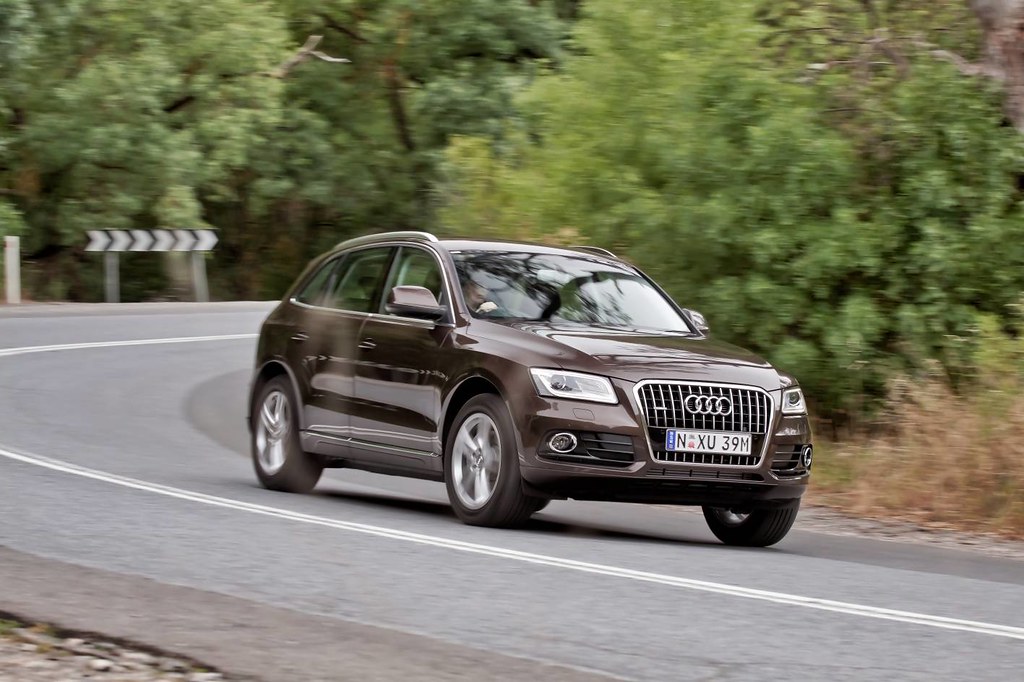
6. **Factoring In Insurance Costs: Be Prepared for the Premiums**One area where expectations sometimes need adjustment when buying a used EV is insurance costs. It’s a heads-up that insurance premiums for electric vehicles can frequently be higher than those for comparable traditional gasoline-powered cars. Understanding the underlying reasons for this can help you anticipate and budget for these expenses, ensuring no unwelcome surprises after your purchase.
The primary drivers behind higher EV insurance premiums are often related to the vehicle’s sophisticated and expensive components. The battery pack, for instance, is a costly and complex item, and its replacement or repair after an accident can be significantly more expensive than traditional engine work. Similarly, EVs often incorporate specialized parts and advanced technological systems, which contribute to higher repair costs in the event of a collision.
Don’t let this deter you from your electric aspirations, but rather let it serve as a practical reminder to be proactive. Before you finalize any purchase, make it an absolute priority to obtain multiple insurance quotes for the specific EV model you are considering. This step is particularly crucial if you are weighing options between different models or even different model years, as premiums can vary significantly.
Sometimes, a slightly older model, or one with a less complex build, might have significantly lower premiums, offering a sweet spot between acquisition cost and ongoing ownership expenses. Being informed about these costs upfront allows you to make a truly comprehensive financial decision, ensuring that the total cost of ownership remains attractive and within your budget. It’s a vital part of the checklist before you sign anything.
Read more about: Jennifer Lopez’s $50 Million Crossroads: High-Stakes Assets, Divorce, and the Shifting Luxury Real Estate Market
7. **Mastering the Charging Landscape: Home and Public Infrastructure**Transitioning to an electric vehicle fundamentally changes how you ‘fuel up,’ and understanding the charging infrastructure is paramount for a seamless ownership experience. While the convenience of never visiting a gas station is a major draw, setting up reliable charging at home is often the cornerstone of daily EV life. Most EVs come equipped with a Level 1 charging cable, which plugs into a standard 120V household outlet, but with charging times ranging from 20 to 40 hours for a full charge, it’s largely impractical for anything more than trickle charging.
The true game-changer for daily EV use is Level 2 home charging. Operating at 240V, similar to an electric dryer, a Level 2 setup can reduce charging times to a practical 4 to 8 hours for most vehicles, making overnight top-ups entirely feasible. Installation costs for a Level 2 charger typically range from $500 to $1,500, depending on factors like your electrical panel’s capacity and the proximity of the charger to the panel. It’s a crucial investment that ensures your EV is always ready for your next adventure, and buyers should certainly factor these potential costs into their overall budget.
Beyond the home, the public charging network continues its rapid expansion, offering vital support for longer trips. Tesla’s Supercharger network remains a benchmark for reliability and coverage, with over 2,000 locations nationwide, and its ongoing integration with other manufacturers’ vehicles starting in 2024 is a significant development. However, major networks like Electrify America, EVgo, and ChargePoint are also growing, providing CCS fast-charging options along most major highways. While reliability and pricing can vary across these networks and locations, the increasing prevalence of fast chargers makes longer-distance EV travel more viable than ever.
When evaluating a used EV, it’s also critical to test its charging capabilities. Verify the type of connector it uses—CHAdeMO (older Nissan Leafs), CCS, or NACS (Tesla-piloted, now widely adopted). Find a charger, either at the dealership or a public station, and ensure it connects properly and charges at a speed roughly aligning with the automaker’s advertised rates (often the 10 to 80 percent battery charging time). If the car charges significantly slower than expected, it could indicate underlying battery issues, warranting further investigation.
Your personal charging preferences should also influence your vehicle choice. If you anticipate heavy reliance on public chargers, especially for routine use, opting for a vehicle with faster charging speeds (higher kilowatts per hour) will greatly enhance convenience. It’s also wise to check if the vehicle comes with a NACS adapter, which can provide access to the extensive Tesla Supercharger network, significantly broadening your charging options and improving the overall ownership experience.
Read more about: Beyond the Buzz: Unpacking Why Car Subscription Services are Driving the Future of Automotive Mobility
8. **Navigating Warranty Intricacies: Beyond the Battery**While Section 1 touched upon the existence of battery warranties, delving deeper into their intricacies is vital for a comprehensive understanding of your used EV’s long-term protection. Most manufacturers back their EV batteries with an impressive 8-year or 100,000-mile warranty, typically covering capacity degradation below 70% of the original specification. This coverage is a significant safeguard, especially given the battery’s status as the most critical and expensive component, and importantly, these warranties generally transfer to subsequent owners, providing crucial peace of mind for secondhand buyers.
However, the scope of these warranties can vary significantly across brands. Tesla, for instance, often extends its coverage to include the drive unit alongside the battery, offering a more holistic protection package for its powertrain components. Other manufacturers may have different terms, potentially separating battery coverage from other critical EV systems. Understanding these specific warranty terms is essential, as they directly impact your assessment of long-term ownership risks and can even provide valuable leverage during price negotiations. Always verify precisely what is covered and for how long.
A proactive approach is to obtain the vehicle’s VIN (Vehicle Identification Number) and contact the manufacturer directly to confirm the remaining warranty term and, crucially, its transferability to a new owner. “Batteries are often warranted separately from the rest of the car,” notes Sean Tucker, lead editor for Kelley Blue Book, emphasizing that these rules can be tricky. This verification step is non-negotiable, ensuring that you don’t inadvertently lose out on coverage that you believed was in place.
While the primary focus is often on the battery, don’t overlook the bumper-to-bumper or powertrain warranties that might still be in effect. Though less common on older used models, some vehicles, particularly Certified Pre-Owned (CPO) examples, may come with extended factory or dealer warranties that cover non-battery components. These can protect against issues with advanced technological systems, infotainment, or other crucial “bells and whistles” that are increasingly common in modern EVs, adding another layer of security to your purchase.

9. **Understanding EV Maintenance: Tires, Brakes, and Longevity**One of the most celebrated advantages of electric vehicles is their inherently simpler mechanical design, leading to significantly lower routine maintenance costs compared to their gasoline-powered counterparts. The absence of an internal combustion engine means you can wave goodbye to oil changes, transmission fluid flushes, spark plug replacements, and most belt and hose inspections. This translates to annual maintenance costs typically totaling just $300-$500, a stark contrast to the $800-$1,200 often associated with comparable gasoline vehicles.
However, EVs do have their unique maintenance considerations, particularly concerning tires. Due to the heavy battery packs and the instant, high torque delivery that electric motors provide, EVs tend to wear down tires faster. High-performance electric vehicles, in particular, may require tire replacement every 20,000 to 30,000 miles, which is considerably sooner than the 40,000 to 60,000 miles expected from efficient gasoline vehicles. Therefore, when inspecting a used EV, pay close attention to the tire treads and ask the dealer or seller when the tires were last replaced. Furthermore, many tire manufacturers now produce EV-specific models designed to accommodate the unique weights and driving dynamics of electric cars, offering enhanced durability and efficiency.
On the flip side, EV braking systems often boast significantly extended lifespans thanks to regenerative braking. This innovative technology uses the electric motor to slow the vehicle, converting kinetic energy back into electricity to recharge the battery. This means the friction brakes are used far less frequently and less aggressively, dramatically reducing wear and tear. Many EVs may only require brake service every 80,000 to 100,000 miles, a substantial improvement over the 25,000 to 40,000 miles typical for traditional vehicles, contributing to long-term savings.
Ultimately, the inherent simplicity of EV drivetrains, with fewer moving parts than gasoline-powered cars, translates into greater overall longevity. As Liz Najman, director of market insights at Recurrent, highlights, “You don’t have to be put off by a high-mileage used EV.” The focus shifts from engine wear to the condition and age of the battery, which, as discussed, comes with robust warranty protection. This fundamental difference means that a high-mileage EV can often be a remarkably reliable and cost-effective purchase, offering many more years of dependable service than a similarly aged and driven ICE vehicle.
Read more about: Beyond the Badge: Uncovering the True Financial Realities of Owning a Classic Porsche 911
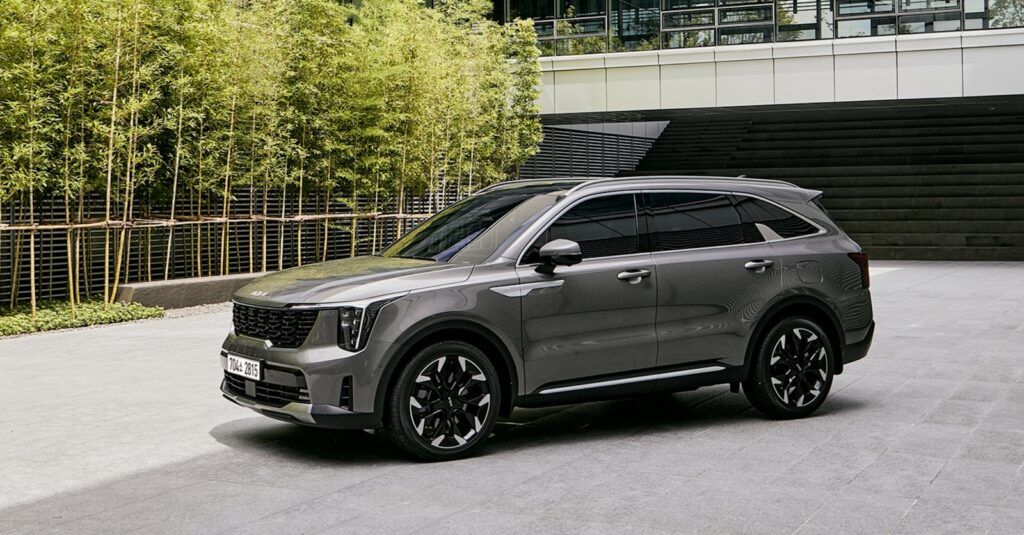
10. **Regional Market Dynamics: Finding Your Best Value**The used EV market isn’t a monolithic entity; pricing, availability, and even the types of incentives available can vary dramatically depending on your geographic location. Understanding these regional market dynamics is a strategic advantage for any savvy buyer looking to maximize value. Different climates, charging infrastructure densities, and local incentive programs all play a role in shaping the secondhand EV landscape, offering unique opportunities and challenges across the country.
On the West Coast, particularly in California, EV adoption rates are the highest in the nation, driven by comprehensive state and local incentive programs and a dense charging infrastructure. While this creates an abundant supply of used EVs, it also translates to premium pricing, often 10-20% above national averages. However, these higher prices can often be offset by robust state and utility company incentives, such as California’s Clean Vehicle Rebate Program and access to HOV lanes, which provide substantial value beyond the initial purchase price.
Conversely, the Southeast—including states like Texas, Florida, and Georgia—often presents excellent value opportunities for used EVs. Lower adoption rates and a more extensive inventory in these markets can lead to more competitive pricing. Buyers in these regions may find significant bargains, but they should be particularly vigilant about vehicle history and maintenance records, especially considering that hot climates can accelerate battery degradation. Prioritizing vehicles with active battery cooling and a history of consistent, moderate charging habits is a smart strategy here.
The Northeast and Mid-Atlantic regions strike a balance, offering a good mix of infrastructure coverage and moderate pricing. These areas also provide valuable real-world data on cold-weather EV performance, a crucial consideration for buyers in similar climates. It’s important to remember that winter conditions can reduce an EV’s range by 20-30%, a factor that varies by model and heating system efficiency. Furthermore, exposure to snow and road salt necessitates careful inspection of charging ports and undercarriage components for signs of corrosion, which is a critical aspect for long-term reliability in these environments. When considering a used EV in colder climates, look for models equipped with a heat pump, which makes significantly more efficient use of the car’s heating system, helping to preserve range.
Read more about: Mastering the Motorcycle Market: Optimal Timing and Strategic Selling for Enthusiasts
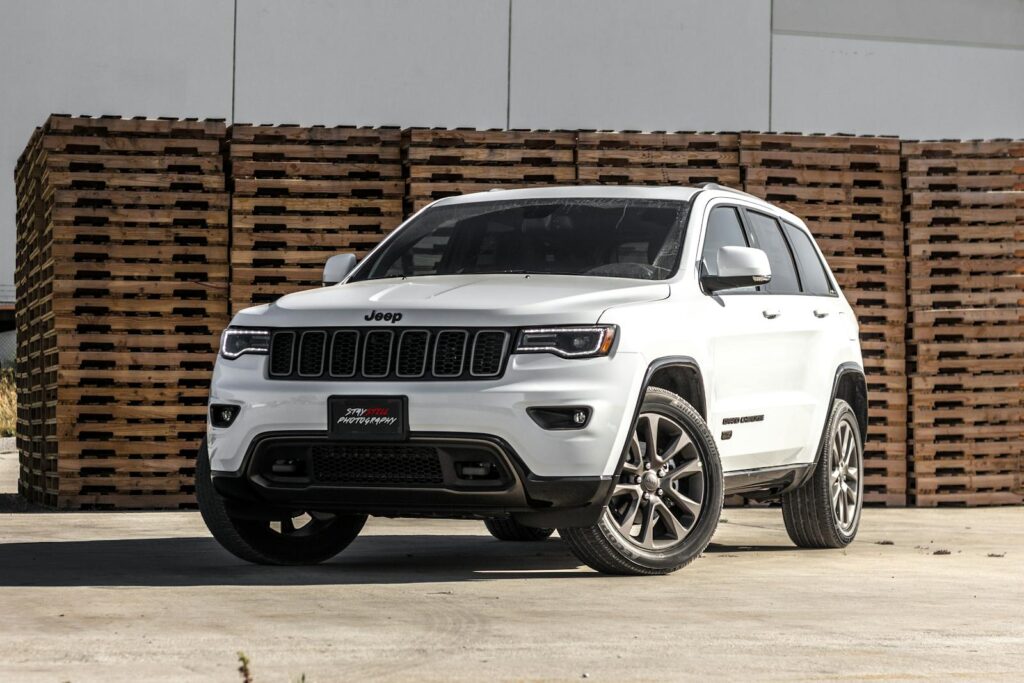
11. **Total Cost of Ownership (TCO): The Real Savings Story**While the upfront purchase price is a major consideration, the true financial advantage of a used EV truly shines through its Total Cost of Ownership (TCO). This comprehensive metric accounts for every expense associated with owning and operating a vehicle over its lifespan, and for EVs, it tells a compelling story of long-term savings that often dwarfs the initial investment. Understanding TCO empowers you to make a financially astute decision, recognizing that a slightly higher purchase price might yield substantial savings over time.
The most immediate and impactful saving comes from ‘fuel’ costs. National average electricity costs, typically around $0.13-$0.16 per kWh, translate to an incredibly efficient $0.04-$0.06 per mile for most EVs. This stands in stark contrast to gasoline vehicles, which often cost $0.12-$0.16 per mile at 30-mpg. These seemingly small per-mile savings compound dramatically, often justifying a used EV purchase within just 2-3 years. Regional variations in electricity prices and gasoline costs will influence these figures, with areas boasting cheap electricity and expensive gasoline seeing the most significant financial advantage. Savvy owners can further optimize these savings by leveraging time-of-use electricity rates, scheduling charging during off-peak hours when rates can drop to $0.08-$0.12 per kWh through smart charging systems.
As previously noted, maintenance costs are another area where EVs deliver substantial financial benefits. The elimination of routine oil changes, transmission services, and spark plug replacements drastically reduces annual expenses, typically saving owners hundreds of dollars each year. While tire wear can be higher due to EV weight and torque, this is often offset by the significant reduction in brake maintenance, thanks to regenerative braking systems. Overall, the simplified drivetrain means fewer moving parts to break down, contributing to lower repair bills and extended reliability, directly enhancing the long-term value proposition.
When calculating your personal TCO, remember to factor in any available government incentives, such as the federal Used Clean Vehicle Credit, and potential state or local perks. Also, consider the cost of home charging installation, which, while an initial outlay, unlocks the most convenient and cost-effective charging solution. Most buyers can anticipate saving $1,500-$3,000 annually in operating costs compared to comparable gasoline vehicles, making the used EV not just an environmentally friendly choice, but a remarkably sound financial investment for the future.

12. **Model-Specific Reliability & Quirks: What to Expect**While the general principles of used EV buying apply across the board, the specific reliability and unique quirks can vary considerably between manufacturers and even across different model years. Acknowledging these model-specific nuances is crucial for setting realistic expectations and ensuring you select a vehicle that aligns with your priorities and tolerance for potential service needs. Different brands bring different strengths and weaknesses to the table, informed by their approach to EV development and manufacturing.
Tesla vehicles, for instance, are renowned for their exceptional battery longevity and advanced software functionality, continuously enhanced through over-the-air (OTA) updates that can even add new features over time. This ongoing improvement partially offsets traditional depreciation patterns. However, earlier Tesla production examples are known for variable build quality, with common service needs sometimes arising outside warranty coverage for components like door handle mechanisms, window regulators, and interior trim pieces. Service availability for Teslas is concentrated in major metropolitan areas, though mobile service options can address many common issues.
In contrast, electric vehicles from traditional manufacturers like BMW, Mercedes, and Audi generally boast superior build quality and utilize luxury-grade materials and assembly processes, often reflecting their legacy of premium automotive craftsmanship. These brands also benefit from broader service networks through their established dealership infrastructure. However, traditional automakers have sometimes lagged in software sophistication compared to Tesla, and their charging infrastructure access (outside of general CCS networks) has historically been less integrated. Furthermore, while their service networks are extensive, some dealer service departments may still be developing their expertise in EV diagnostics and repairs, potentially leading to longer resolution times for specific issues.
It’s also worth revisiting warranty coverage in this context. While most manufacturers provide robust battery warranties, traditional luxury brands sometimes offer more comprehensive bumper-to-bumper coverage, potentially including maintenance and wear items for a longer period than Tesla’s offerings. This difference can be a significant factor for buyers prioritizing extensive initial protection against a wider array of potential issues. Understanding these brand-specific traits, from build quality and software to service and warranty, allows you to make an informed decision tailored to your personal preferences and risk appetite.
**Stepping Into the Electric Future with Confidence**
The used electric vehicle market in 2025 is not just evolving; it’s practically brimming with opportunities for the discerning buyer. As we’ve journeyed through the critical checks, practical considerations, and financial advantages, it’s clear that the landscape has reached a unique convergence point. Technological maturity, expanding charging networks, and favorable economics — including those compelling federal tax credits and significant depreciation — have created an ideal moment to embrace electric mobility. This isn’t just about saving money at the pump or reducing your carbon footprint; it’s about investing in a future where your commute is quieter, your technology is smarter, and your driving experience is more connected than ever before.
Armed with this comprehensive guide, you’re not just buying a car; you’re making a strategic entry into the next era of personal transportation. From scrutinizing battery health and leveraging market depreciation to understanding charging infrastructure and deciphering total ownership costs, every piece of the puzzle contributes to a confident and rewarding purchase. Don’t let past anxieties or misconceptions deter you. The data shows that EV batteries are lasting longer, maintenance is simpler, and the support systems are more robust than ever. Your next electric adventure awaits, offering proven reliability, modern features, and unparalleled value. Now is the time to seize these opportunities and drive into the electric future with enthusiasm and unwavering assurance. Happy hunting!



